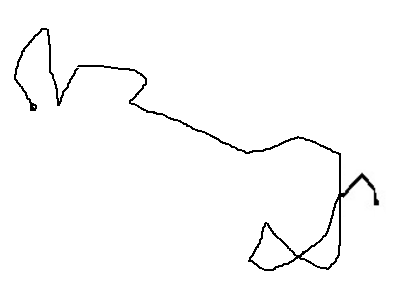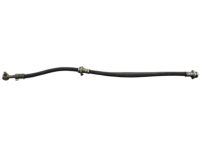×
- Live Chat
- 1-888-726-6993

My Garage
My Account
Cart
Genuine Nissan Murano Brake Line
Brake Hose- Select Vehicle by Model
- Select Vehicle by VIN
Select Vehicle by Model
orMake
Model
Year
Select Vehicle by VIN
For the most accurate results, select vehicle by your VIN (Vehicle Identification Number).
26 Brake Lines found
Nissan Murano Hose Assy-Brake,Front
Part Number: 46210-5AA0B$42.84 MSRP: $66.18You Save: $23.34 (36%)Ships in 1-3 Business DaysNissan Murano Hose Assy-Brake,Front
Part Number: 46211-5AA0B$42.84 MSRP: $66.18You Save: $23.34 (36%)Ships in 1-3 Business DaysNissan Murano Hose Assy-Brake,Rear
Part Number: 46210-3JA1B$15.45 MSRP: $22.80You Save: $7.35 (33%)Ships in 1-3 Business DaysNissan Murano Hose Assy-Brake,Rear
Part Number: 46210-1AA2A$36.47 MSRP: $53.78You Save: $17.31 (33%)Ships in 1-3 Business DaysNissan Murano Hose Assy-Brake,Front
Part Number: 46210-1AA1A$46.28 MSRP: $64.93You Save: $18.65 (29%)Ships in 1-3 Business DaysNissan Murano Hose Assy-Brake,Front
Part Number: 46211-1AA1A$48.15 MSRP: $67.55You Save: $19.40 (29%)Ships in 1-3 Business DaysNissan Murano Hose Assy-Brake,Rear
Part Number: 46210-CA010$20.33 MSRP: $28.00You Save: $7.67 (28%)Ships in 1-3 Business DaysNissan Murano Hose Assy-Brake,Rear
Part Number: 46211-CA010$20.59 MSRP: $28.37You Save: $7.78 (28%)Ships in 1-3 Business DaysNissan Murano Hose Assy-Brake,Rear
Part Number: 46211-CC20A$20.59 MSRP: $28.37You Save: $7.78 (28%)Ships in 1-3 Business DaysNissan Murano Tube Assy-Brake,Front RH
Part Number: 46240-1AA0A$28.27 MSRP: $38.93You Save: $10.66 (28%)Ships in 1-3 Business DaysNissan Murano Hose Assy-Brake,Front
Part Number: 46210-CA000$44.03 MSRP: $60.65You Save: $16.62 (28%)Ships in 1-3 Business DaysNissan Murano Tube-Distance,Shock Absorber Mounting
Part Number: 55323-CA00A$20.32 MSRP: $27.98You Save: $7.66 (28%)Ships in 1-3 Business DaysNissan Murano Tube Assy-Brake,Front RH
Part Number: 46240-5AF0A$41.02 MSRP: $60.49You Save: $19.47 (33%)Ships in 1-3 Business DaysNissan Murano Tube Assy-Brake,Front LH
Part Number: 46242-5AF0A$28.32 MSRP: $39.73You Save: $11.41 (29%)Ships in 1-3 Business DaysNissan Murano Tube Assy-Brake,Front RH
Part Number: 46240-5AA0A$27.89 MSRP: $41.15You Save: $13.26 (33%)Ships in 1-3 Business DaysNissan Murano Hose Assy-Brake,Rear
Part Number: 46210-JP05A$36.47 MSRP: $53.78You Save: $17.31 (33%)Ships in 1-3 Business DaysNissan Murano Tube Assy-Brake,Front LH
Part Number: 46242-5AA0B$52.85 MSRP: $77.94You Save: $25.09 (33%)Ships in 1-3 Business DaysNissan Murano Tube Assy-Brake,Front LH
Part Number: 46242-5AA0A$34.63 MSRP: $51.08You Save: $16.45 (33%)Ships in 1-3 Business DaysNissan Murano Hose Assy-Brake,Rear
Part Number: 46210-CC20A$20.33 MSRP: $28.00You Save: $7.67 (28%)Ships in 1-3 Business DaysNissan Murano Hose Assy-Brake,Front
Part Number: 46210-CA005$44.00 MSRP: $60.60You Save: $16.60 (28%)Ships in 1-3 Business Days
| Page 1 of 2 |Next >
1-20 of 26 Results
Nissan Murano Brake Line
If you need any OEM Nissan Murano Brake Line, feel free to choose them out of our huge selection of genuine Nissan Murano Brake Line. All our parts are offered at unbeatable prices and are supported by the manufacturer's warranty. In addition, we offer quick shipping to have your parts delivered to your door step in a matter of days.
Nissan Murano Brake Line Parts Questions & Experts Answers
- Q: How often should you inspect the flexible hoses connecting the steel brake lines to the brake assemblies, and what steps should you follow to replace them on Nissan Murano?A: About every six months, with the vehicle raised and securely supported on jackstands, inspect the flexible hoses connecting the steel brake lines to the front and rear brake assemblies for cracks, chafing, leaks, blisters, and other damage, as these are crucial components of the brake system. Use a light and mirror for a thorough check, and replace any damaged hose with a new one. To replace brake hoses, loosen the wheel lug nuts, raise the vehicle, and remove the wheel. Unscrew the brake line fitting from the hose at the bracket using a flare-nut wrench to avoid rounding off the corners. Remove the U-clip from the female fitting at the bracket with pliers and pass the hose through the bracket. At the caliper end, remove the banjo bolt and separate the hose from the caliper, ensuring to replace the two sealing washers during installation. For front brake hoses, also remove the U-clip from the strut bracket before detaching the hose. To install the new hose, pass the caliper fitting end through the strut bracket, connect it to the caliper with the banjo bolt and new sealing washers, and ensure the hose is not twisted. Route the hose into the frame bracket, connect the brake line fitting by hand, install the U-clip, and tighten the fitting securely. After installation, check the master cylinder fluid level and add fluid as necessary, then bleed the brake system and test the brakes carefully before driving. When replacing metal brake lines, use the correct steel parts and avoid copper tubing. Prefabricated brake lines with flared tube ends and installed fittings are available at auto parts stores. Ensure the new line is securely supported in the brackets and has adequate clearance from moving or hot components.
Related Nissan Murano Parts
Browse by Year
2024 Brake Line 2023 Brake Line 2022 Brake Line 2021 Brake Line 2020 Brake Line 2019 Brake Line 2018 Brake Line 2017 Brake Line 2016 Brake Line 2015 Brake Line 2014 Brake Line 2013 Brake Line 2012 Brake Line 2011 Brake Line 2010 Brake Line 2009 Brake Line 2008 Brake Line 2007 Brake Line 2006 Brake Line 2005 Brake Line 2004 Brake Line 2003 Brake Line




































